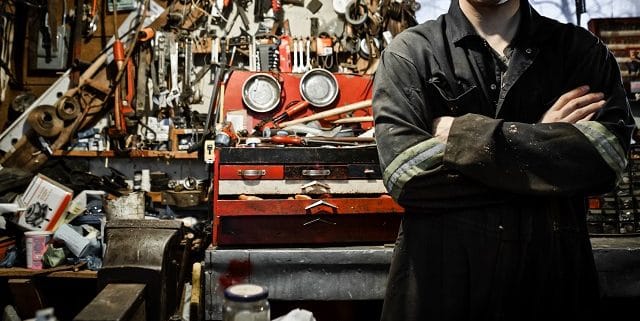Clothing
Protective clothing is needed for work at or below 4°C. Clothing should be selected to suit the temperature, weather conditions (e.g., wind speed, rain), the level and duration of activity, and job design. These factors are important to consider so that you can regulate the amount of heat and perspiration you generate while working. If the work pace is too fast or if the type and amount of clothing are not properly selected, excessive sweating may occur. The clothing next to body will become wet and the insulation value of the clothing will decrease dramatically. This increases the risk for cold injuries.
- Clothing should be worn in multiple layers which provide better protection than a single thick garment. The air between layers of clothing provides better insulation than the clothing itself. Having several layers also gives you the option to open or remove a layer before you get too warm and start sweating or to add a layer when you take a break. It also allows you to accommodate changing temperatures and weather conditions. Successive outer layers should be larger than the inner layer, otherwise the outermost layer will compress the inner layers and will decrease the insulation properties of the clothing.
- The inner layer should provide insulation and be able to “wick” moisture away from the skin to help keep it dry. Thermal underwear made from polyesters or polypropylene is suitable for this purpose. “Fishnet” underwear made from polypropylene wicks perspiration away from the skin and is significantly thicker than regular underwear. It also keeps the second layer away from the skin. The open mesh pattern enables the moisture to evaporate and be captured on the next layer away from the skin. The second layer covers the “holes” in the fishnet underwear which contributes to the insulation properties of the clothing.
- The additional layers of clothing should provide adequate insulation for the weather conditions under which the work being done. They should also be easy to open or remove before you get too warm to prevent excessive sweating during strenuous activity. Outer jackets should have the means for closing off and opening the waist, neck and wrists to help control how much heat is retained or given off. Some jackets have netted pockets and vents around the trunk and under the arm pits (with zippers or Velcro fasteners) for added ventilation possibilities.
- For work in wet conditions, the outer layer of clothing should be waterproof. If the work area cannot be shielded against wind, an easily removable windbreak garment should be used. Under extremely cold conditions, heated protective clothing should be made available if the work cannot be done on a warmer day.
- Almost 50 percent of body heat is lost through the head. A wool knit cap or a liner under a hard hat can reduce excessive heat loss.
- Clothing should be kept clean since dirt fills air cells in fibres of clothing and destroys its insulating ability.
- Clothing must be dry. Moisture should be kept off clothes by removing snow prior to entering heated shelters. While the worker is resting in a heated area, perspiration should be allowed to escape by opening the neck, waist, sleeves and ankle fasteners or by removing outerwear. If the rest area is warm enough it is preferable to take off the outer layer(s) so that the perspiration can evaporate from the clothing.
- If fine manual dexterity is not required, gloves should be used below 4°C for light work and below -7°C for moderate work. For work below -17°C, mittens should be used.
- Cotton is not recommended. It tends to get damp or wet quickly, and loses its insulating properties. Wool and synthetic fibres, on the other hand, do retain heat when wet.
Footwear
Felt-lined, rubber bottomed, leather-topped boots with removable felt insoles are best suited for heavy work in cold since leather is porous, allowing the boots to “breathe” and let perspiration evaporate. Leather boots can be “waterproofed” with some products that do not block the pores in the leather. However, if work involves standing in water or slush (e.g., fire fighting, farming), the waterproof boots must be worn. While these protect the feet from getting wet from cold water in the work environment, they also prevent the perspiration to escape. The insulating materials and socks will become wet more quickly than when wearing leather boots and increase the risk for frostbite.
Socks
You may prefer to wear one pair of thick, bulky socks or two pairs – one inner sock of silk, nylon, or thin wool and a slightly larger, thick outer sock. Liner socks made from polypropylene will help keep feet dry and warmer by wicking sweat away from the skin. However, as the outer sock becomes damper, its insulation properties decrease. If work conditions permit, have extra socks available so you can dry your feet and change socks during the day. If two pairs of socks are worn, the outer sock should be a larger size so that the inner sock is not compressed.
Always wear the right thickness of socks for your boots. If they are too thick, the boots will be “tight,” and the socks will lose much of their insulating properties when they are compressed inside the boot. The foot would also be “squeezed” which would slow the blood flow to the feet and increase the risk for cold injuries. If the socks are too thin, the boots will fit loosely and may lead to blisters.
Face and Eye Protection
In extremely cold conditions, where face protection is used, eye protection must be separated from the nose and mouth to prevent exhaled moisture from fogging and frosting eye shields or glasses. Select protective eye wear that is appropriate for the work you are doing, and for protection against ultraviolet light from the sun, glare from the snow, blowing snow/ice crystals, and high winds at cold temperatures.
What are some additional prevention tips for working in the cold?
To prevent excessive sweating while working, remove clothing in the following order:
- mittens or gloves (unless you need protection from snow or ice),
- headgear and scarf.
- Then open the jacket at the waist and wrists, and
- Remove layers of clothing.
As you cool down, follow the reverse order of the above steps.
Prevent contact of bare skin with cold surfaces (especially metallic) below -7°C as well as avoiding skin contact when handling evaporative liquids (gasoline, alcohol, cleaning fluids) below 4°C. Sitting or standing still for prolonged periods should also be avoided.
Balanced meals and adequate liquid intake are essential to maintain body heat and prevent dehydration. Eat properly and frequently. Working in the cold requires more energy than in warm weather because the body is working to keep the body warm. It requires more effort to work when wearing bulky clothing and winter boots especially when walking through snow.
Drink fluids often especially when doing strenuous work. For warming purposes, hot non-alcoholic beverages or soup are suggested. Caffeinated drinks such as coffee should be limited because it increases urine production and contributes to dehydration. Caffeine also increases the blood flow at the skin surface which can increase the loss of body heat.
Alcohol should not be consumed as it causes expansion of blood vessels in the skin (cutaneous vasodilation) and impairs the body’s ability to regulate temperature (it affects shivering that can increase your body temperature) . These effects cause the body to lose heat and thus increase the risk of hypothermia.
In refrigerated rooms, the air speed should not exceed 1 meter per second. If workers are simultaneously exposed to vibration and/or toxic substances, reduced limits for cold exposure may be necessary.
Source: Canadian Centre for Occupational Health and Safety










